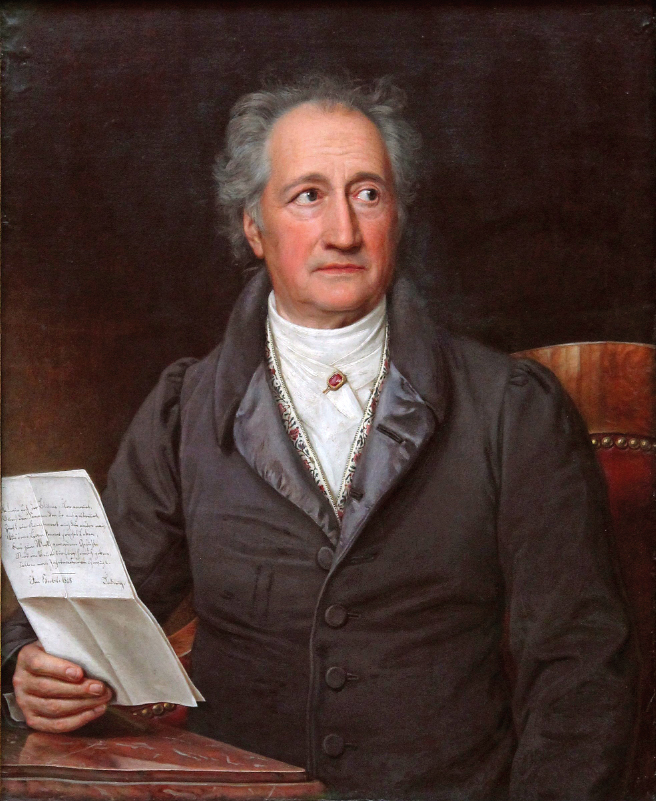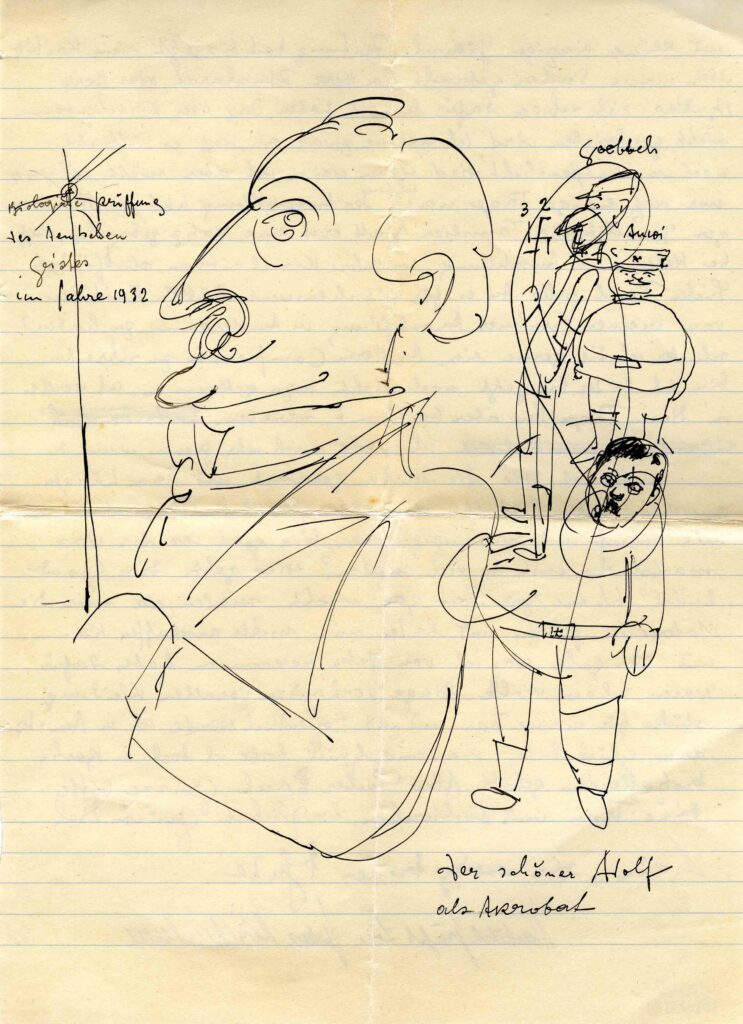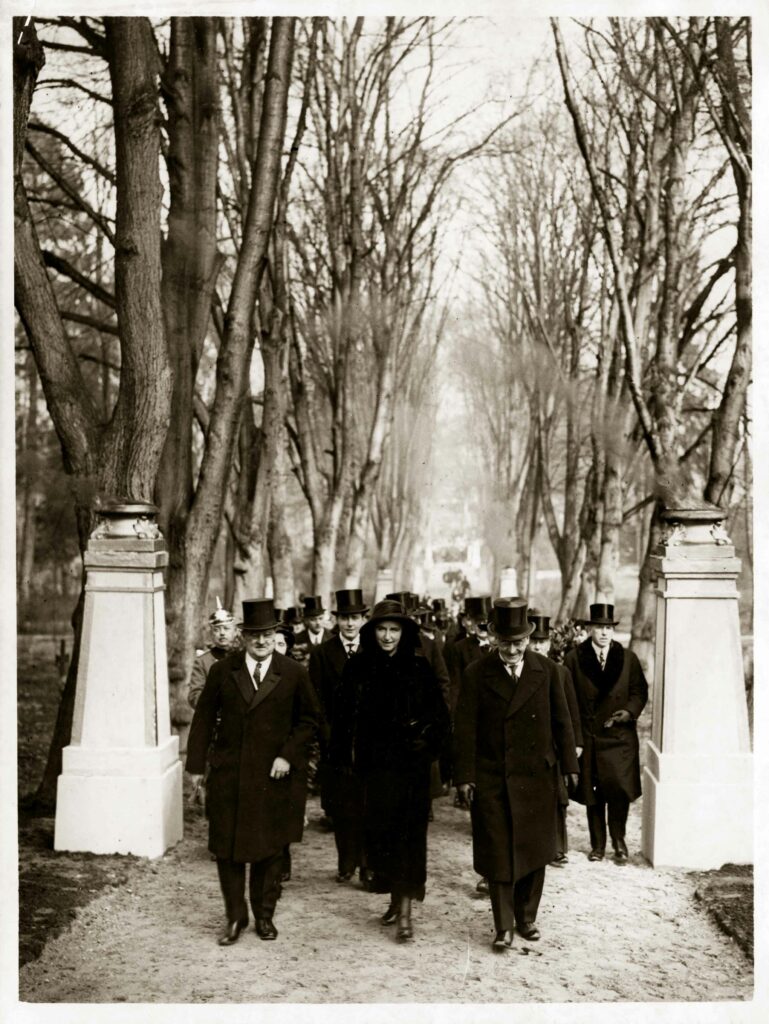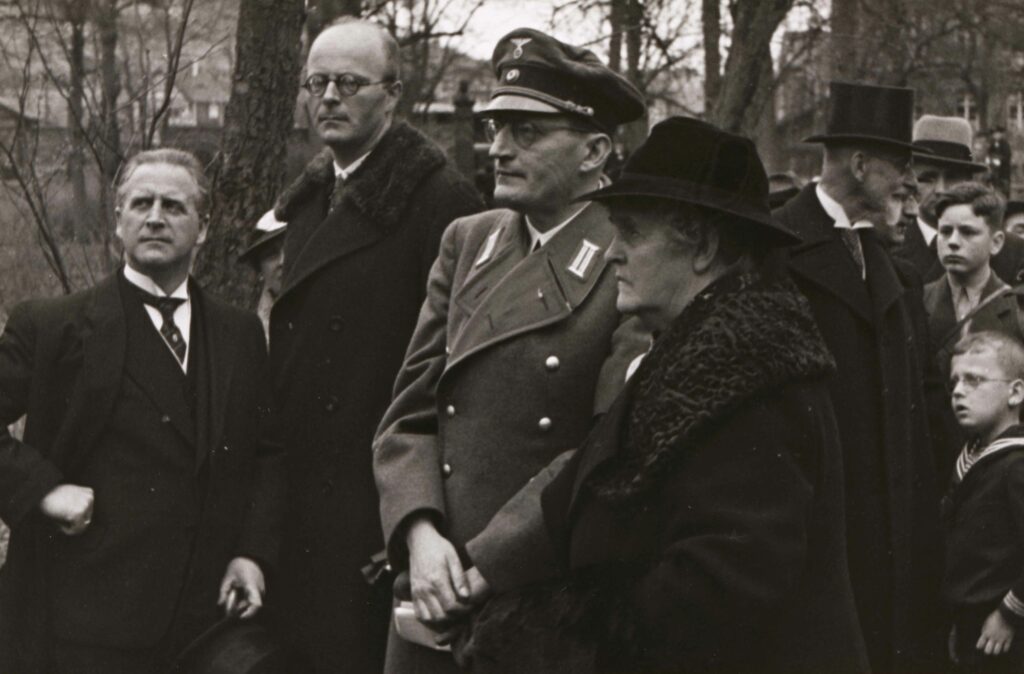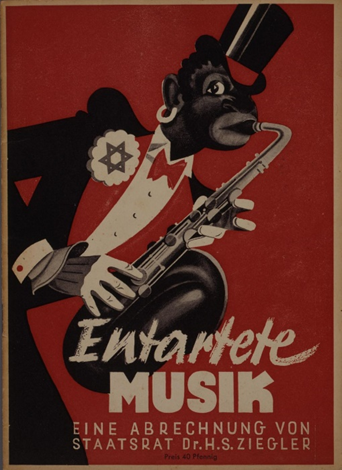Goethe’s Memorial Service, 1932
At the start of 1932, many events were planned in Germany to commemorate the 100th year anniversary of Johann Wolfgang Goethe’s death on March 22. One of the main events of the commemoration was a Goethe memorial week in Weimar. In Weimar, however, unpopular art objects had been eliminated and literature banned since 1930 under National Socialist Minister of the Interior and Education Wilhelm Frick (1877–1946).
Goethe’s Memorial Service, 1932
At the start of 1932, many events were planned in Germany to commemorate the 100th year anniversary of Johann Wolfgang Goethe’s death on March 22. One of the main events of the commemoration was a Goethe memorial week in Weimar. In Weimar, however, unpopular art objects had been eliminated and literature banned since 1930 under National Socialist Minister of the Interior and Education Wilhelm Frick (1877–1946).
This probably inspired Kirszenbaum to draw Goethe turning his back on the National Socialists in a 1932 letter to his friend Paul Citroen.
This famous portrait of Goethe, painted by Joseph Karl Stieler (1781–1858) in 1828, probably inspired Kirszenbaum’s cartoon.
Biological test of the German spirit in 1932. The beautiful Adolf [Hitler] as an acrobat.
Hitler can be seen behind Goethe’s back. Depicted as an “acrobat”, he carries Ernst Röhm (1887–1934), the chief of staffof the SA, and the Reichs’ chief of propaganda Joseph Goebbels (1897–1945) on his shoulders.
Republican Commemoration
A procession at the Reich memorial service on March 22, 1932 in Weimar. Pictured are (from left to right): State Secretary Dr. Otto Meissner (1880–1953) representing the Reich President, Grand Duchess Feodora (1890–1972) and Reich Chancellor Heinrich Brüning (1885–1970).
The Reichskunstwart Edwin Redslob (1884–1973) commented on the event: »We are burying the republic here«. The National Socialists boycotted the official commemorations because of their allegedly republican tone.
The NSDAP appropriates Goethe
At a National Socialist event in Weimar on March 20, 1930, Dr. Hans Severus Ziegler (1893–1978) explains to NSDAP members that Goethe was “an educator of the people, leadership and the nation.”
Pictured at the unveiling of a monument to the composer Max Reger are (from left to right): the conductor Carl-Maria Artz (18871963), Prince Georg of Saxony- Meiningen (1892–1946), Ziegler (in uniform), and Elsa Reger (1870–1951).
Weimar Iconoclasm
As a cultural advisor in the state government, Ziegler was one of those responsible for the “Weimar iconoclasm” of October 1930. During this process, not only were pictures by Barlach, Dix, Emil Nolde and Kokoschka removed from the city’s museums, but also the murals and reliefs by the Bauhaus master Oskar Schlemmer in the stairwell of the Van de Velde building of the then Staatliche Bauhochschule Weimar, today’s Bauhaus University, destroyed. These were created on the occasion of the Bauhaus exhibition in 1923, which Kirszenbaum had experienced as a first-year student.
“Degenerate” music
From 1933 Ziegler was a member of the state government of Thuringia and became general director of the German National Theater in 1936. Based on the exhibition “Degenerate Art” (1937), he organized the traveling exhibition “Degenerate Music” in 1938, which was primarily directed against jazz and the music of Jewish artists and composers. The cover of the exhibition brochure showed a caricature of a black jazz musician wearing a Star of David in his buttonhole.
Christian T. Barth: Goebbels und die Juden. Paderborn 2003.
Albrecht Dümling: Unter Berufung auf Goethe, Wagner und Hitler. Hans Severus Ziegler und die ideologischen Wurzeln seiner Ausstellung »Entartete Musik«. In: Hanns-Werner Heister (Hg.): »Entartete« Musik 1938 – Weimar und die Ambivalenz, Teil 2, Saarbrücken 2001, S. 496–516.
Hiltrud Häntzschel: »Hitler bei Betrachtung von Goethes Schädel«. Das Goethe-Jahr 1932 in der populären Presse. Erstpublikation: Galerie. Revue culturelle et pédagogique 26 (2008), H. 1, S. 50–77.
Online: https://www.google.com/search?client=firefox-b-d&q=www.goethezeitportal.de+%E2%80%BA+wiss+%E2%80%BA+goethe+%E2%80%BA+haentzschel_goethejahr_
Wolfram Huschke/Claas Cordes (Hg.): »Entartete Musik« 1999. Eine Antwort auf Hans Severus Ziegler. Weimar 1999.
Marcus Mühle: Ernst Röhm. Eine biografische Skizze. Berlin 2016.
Edwin Redslob: Goethes Leben. Berlin 1932.
Edwin Redslob: Von Weimar nach Europa. Erlebtes und Durchdachtes. (Erstausgabe Berlin 1972) Jena 1998.
Volker Wahl: Vor der Fürstengruft. Reichsgedenkfeier zu Goethes 100. Todestag 1932. In: Weimar–Jena: Die große Stadt, H. 5/1 (2012), S. 59–67.
